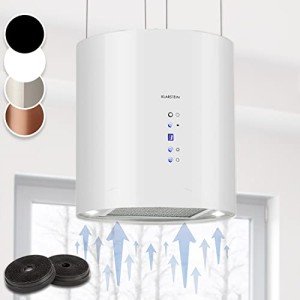What's The Current Job Market For Island Cooker Hood Extractor Fan Pro…
페이지 정보

본문
Island Cooker Hood Extractor Fan: The Essential Guide
In modern kitchen design, the island cooker hood extractor fan has actually become an important appliance, weding functionality with visual appeals. As cooking areas significantly change into multifunctional areas where cooking, dining, and interacting socially occur, the importance of an efficient ventilation system can not be overlooked. This post aims to explore the advantages, types, installation factors to consider, and upkeep practices related to island cooker extractor hood cooker hood extractor fans.
What is an Island Cooker Hood Extractor Fan?
An island cooker hood extractor fan is a ventilation device suspended from the ceiling above a kitchen island or counter top. Its primary function is to extract airborne grease, smoke, steam, and smells created during cooking. Unlike wall-mounted hoods, island cooker hoods hoods offer unobstructed views and preserve a sleek design, vital for open-plan home.
Benefits of Installing an Island Cooker Hood Extractor Fan
- Enhanced Air Quality: Removes impurities from the air, promoting a much healthier cooking environment.
- Visual Appeal: Available in different styles, they function as a focal point in modern kitchens.
- Noise Reduction: Many models offer quiet operation, permitting comfy kitchen discussions.
- Improved Lighting: Some hoods include integrated lighting to brighten the cooking surface area better.
Types of Island Cooker Hood Extractor Fans
Island cooker hood extractor fans can be categorized based upon their performance and style. Here's a breakdown of the numerous types:
| Type | Description |
|---|---|
| Ducted Hoods | Ventilate air outside through ductwork; suitable for heavy cooking jobs. |
| Ductless Hoods | Use filters to purify air and recirculate it back into the kitchen; easier to install and preserve. |
| Convertible Hoods | Can be converted from ducted to ductless; deals flexibility based on kitchen setup. |
| Wall-Mounted Hoods | Installed versus the wall but can be utilized above an island if set up properly. |
Factors to Consider Before Installation
When thinking about an island cooker island hood extractor fan, there are several aspects to remember:
Size and Height: The hood needs to be proportional to the cooking surface. A basic guideline is to have the hood 30-36 inches above the cooking surface area.
CFM Rating: Consider the CFM (Cubic Feet per Minute) score, which indicates the airflow capability. Greater CFM is suitable for heavy cooking.
Sound Level: Look for model requirements worrying noise levels, determined in sones. Go for a score of 1.5-3 sones for peaceful operation.
Design: Aesthetic appeal is crucial. Select a hood that complements the kitchen's total style, consisting of materials and surfaces.
Lighting and Features: Consider models with built-in LED lights and extra features like variable fan speeds.
Setup Process
Installing an island cooker extractor cooker hood extractor fan normally requires professional help due to the intricacies involved. Nevertheless, here's a short summary of the setup steps:
Preparation: Select the suitable place above the kitchen island and make sure there's adequate area for ducting if required.
Mounting: Secure the mounting bracket to the ceiling, ensuring it is level and anchored into a joist for correct support.
Ducting (if relevant): Run ductwork from the hood to the outside of the home, ensuring it is insulated to lessen heat loss if you're utilizing a ducted choice.
Electrical Connections: Connect the electrical wiring according to the producer's directions, Island cooker making sure compliance with all local electrical codes.
Testing: Once installed, confirm the fan operates correctly and evaluate the lighting functions.
Maintenance Tips for Island Cooker Hoods
To prolong the life and efficiency of an island cooker hood extractor fan, routine upkeep is vital. Here are some helpful pointers:
Regular Cleaning: Clean the outside and filters a minimum of as soon as a month to avoid grease accumulation.
Filter Replacement: If using a ductless hood, replace carbon filters every 3-6 months for optimal performance.
Check Ducts: For ducted models, guarantee that ducts are tidy and totally free of blockages to preserve effective airflow.
Check Lights: Regularly check and replace burnt-out bulbs to make sure appropriate lighting throughout cooking.

Frequently Asked Questions About Island Cooker Hood Extractor Fans
Q1: Do I require an authorization to install an island cooker hood?A1: It depends upon regional building codes. It's best to inspect with local authorities or a professional installer. Q2: Can I install an island
cooker hood myself?A2: While some handy house owners may try
it, working with an expert is advised due to the intricacies associated with ducting and electrical work. Q3: How do I select the best CFM for my needs?A3: A basic guideline is
to have 300 CFM for each 10,000 BTUs of the range. For
heavy cooking, consider a greater CFM ranking. Q4: How frequently need to I clean my island cooker hood?A4: The exterior and filters ought to be cleaned
monthly, while carbon filters in ductless designs should be replaced every 3-6 months. Q5: Are there energy-efficient designs available?A5: Yes, lots of manufacturers use energy-efficient alternatives that can assist in saving on electricity costs. An island cooker hood extractor fan is an important addition to any modern kitchen, balancing aesthetic appeal with useful performance. By understanding the types available, considering crucial installation elements, and embracing regular maintenance practices, homeowners can guarantee their kitchen remains a fresh and inviting space. Whether selecting ducted or ductless alternatives, investing in a quality black island extractor fan hood guarantees a cleaner, much healthier cooking environment.
- 이전글Why We Love Treadmills Home Gym (And You Should Also!) 25.05.18
- 다음글Guide To Bed Single Bunk: The Intermediate Guide To Bed Single Bunk 25.05.18
댓글목록
등록된 댓글이 없습니다.


